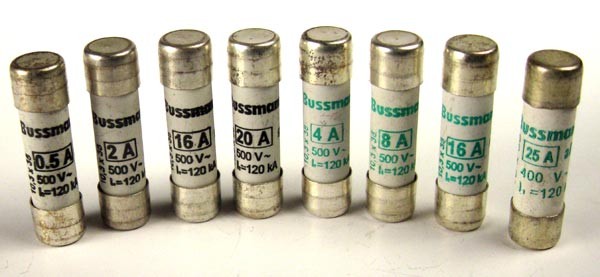Hedges
I See Electromagnetic Fields!
- Joined
- Mar 28, 2020
- Messages
- 20,823
Fake Eaton Bussmann fuse case settle
Bussmann fuse distributor-As Beam Electric, help you select Eaton Bussmann genuine fuse
bussmannpower.com
genuine or fake bussmann fuse
How to tell genuine or fake Bussmann fuse, NH fuse, 170M fuse comparation
bussmannpower.com
I can test modest size breakers for slow and fast trip on AC. I wire a resistive load in series with transformer primary, use breaker to short secondary. That boosts current (and reduces the voltage it interrupts. Could do same with fuses. I use one or more electric radiator heaters, one of them fed from variac, so I can dial in any current I want.
I might be able to scale this up to 1000A or so, enough to fast-trip a 200A breaker.
It would not test the characteristics of tripping at 20,000A or so, where class-T fuses stand out, or full voltage.
For fuses, it would be interesting to send a single pulse, timed with a triac to some point in AC sine wave. This could be below the onset of melt but would show resistance increase with time. That is likely a good way to spot outliers vs. authentic fuses. It could be a non-destructive test of fuses.
Midnight Solar described testing DC breakers with a string of car batteries. Enough series/parallel could test the fuses, but would cost more than buying fuses from approve suppliers.
Testing fast and slow blow times on AC would be a good start. String of batteries could also fast-blow the fuse with DC. One of the members (UpNorth?) tested lithium battery shorted into fuse, and BMS interrupted before fuse blew. Which doesn't prove fuse is good for case of failed BMS. Need the right test setup.




